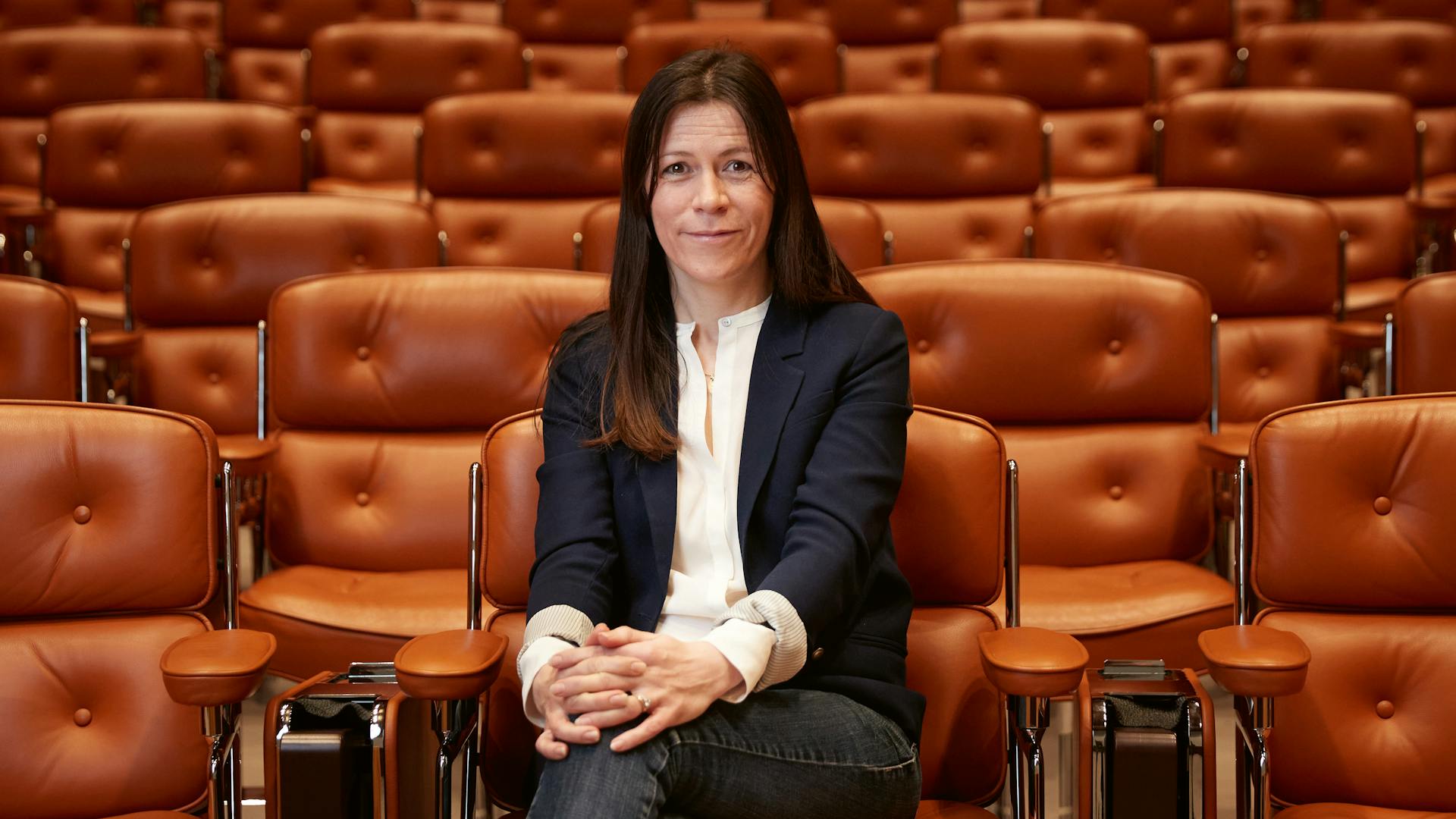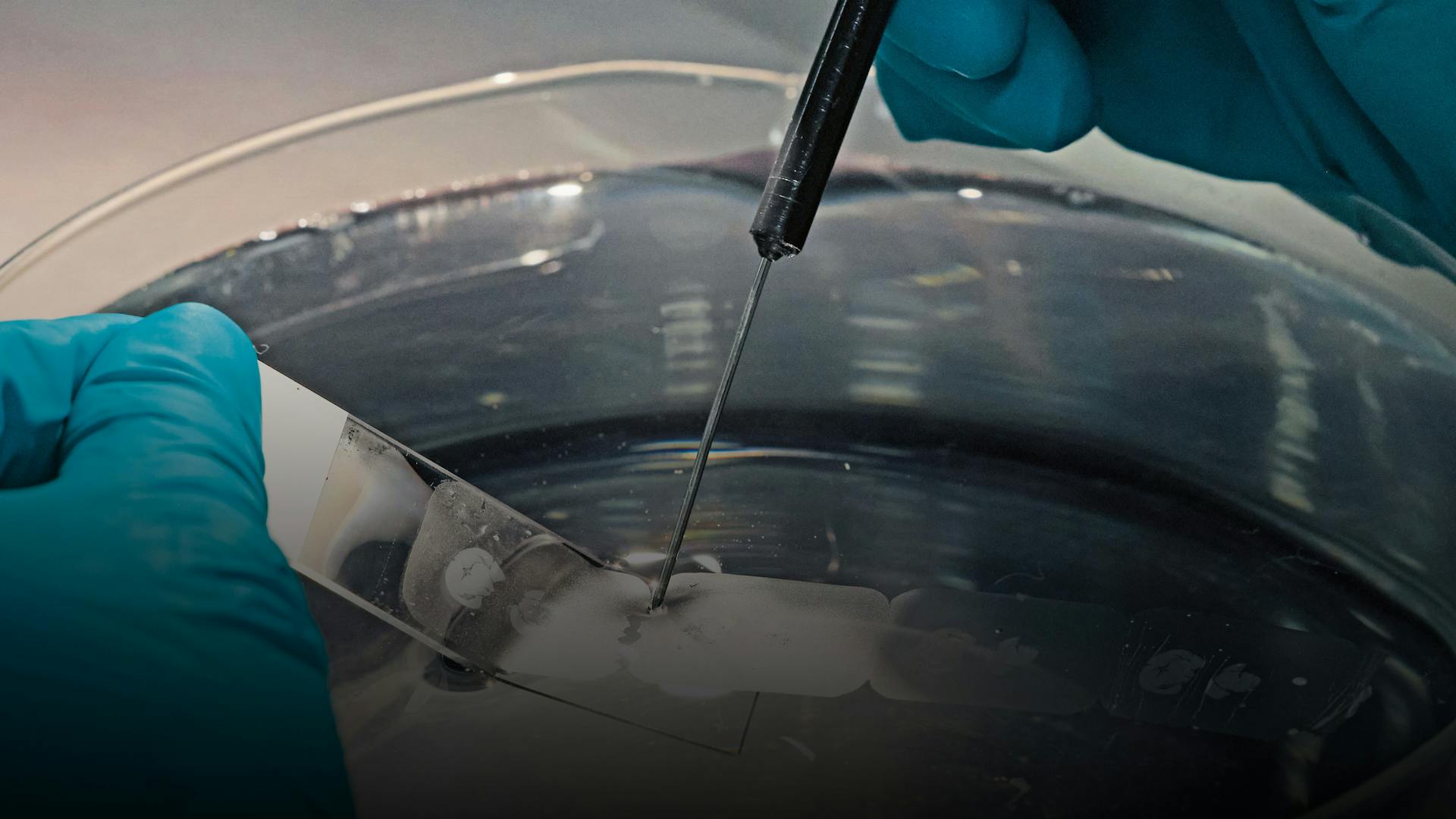
Published on 22/08/2022
Cross-sector collaboration is becoming increasingly important against the background of accelerating political, economic and technological changes, says Gwenaelle Nicolas, a trained neuroscientist. In her current role, she is helping Novartis researchers find industry and public partners with the Innovative Health Initiative. Known as IHI, it is the world’s largest public-private partnership in the healthcare space.
“Given the speed of globalization and technological transformation in areas such as biology, data and digital, companies as well as public and academic partners need to collaborate to leverage healthcare’s collective strength,” she says. The European Union’s answer to this rationale is the IHI, which is part of Europe’s 95.5-billion-euro research endeavor Horizon Europe.
IHI has changed its name and broadened its scope several times since its inception almost two decades ago when it was known as the Innovative Medicines Initiative, or IMI. Besides being the world’s largest collaboration between academic institutions, regulatory authorities, patient groups and private sector players in healthcare, IHI has become an innovation hothouse in areas that are too complex or too big for a single player to tackle.
“The idea of this public-private partnership is to pool resources, talent and expertise in domains that require the know-how from various specialized players,” Nicolas explains. “Since this partnership also includes political and regulatory bodies as well as patient groups, it is the ideal terrain to tackle challenges that are of great importance to the entire sector.”
Together with Salah-Dine Chibout and Stephan Korte, Nicolas has been helping Novartis researchers identify project partners within IHI and its predecessor organizations for the past few years. So far, the trio has helped Novartis scientists participate in more than 70 individual research endeavors.
“Public-private partnerships such as IMI result in important networks among health policy makers, academics and industry partners, which represent valuable opportunities to discuss health policy issues of common interest such as the review of the pharmaceutical legislation or the rare-disease and orphan drug regulations,” says Salah-Dine Chibout.
The project partnerships have allowed Novartis to create essential groundwork in a broad array of healthcare domains. These range from developing solutions for biomarker identification for difficult-to-treat conditions such as psoriatic arthritis to setting up digital platforms that help increase supply chain security and improve clinical trials – all with a holistic sector view in mind.
The IHI and its predecessor organizations were built exactly for such large-scale efforts when the public-private partnership was created in 2008 amid the European Union’s accelerated research push. As was the case in IMI, the “public” member in the partnership is the European Union, represented by the European Commission, providing financial support to academic institutions, hospitals, regulatory authorities and patient organizations participating in the partnership.
Private firms typically join via trade groups, including the European Federation of Pharmaceutical Industries and Associations, which allows Novartis to participate in the scheme even though Switzerland has been partly cut off from the European Union’s Horizon Europe research program, which is especially hard for academia.
Furthermore, the European Coordination Committee of the Radiological, Electromedical and Healthcare IT Industry, as well as EuropaBio and MedTech Europe are also part of IHI now, as the program’s scope has been widened beyond pharma companies.
“With the latest iteration of the public-private partnership, the IHI has become a truly cross-sector collaboration platform, which also includes players from the medical technology space,” Nicolas says. “This is an important addition, as companies from the diagnostics but also from the digital arena can now work more intensively together with traditional pharmaceutical companies.”
In its current form, the IHI is set to run until 2032 with a budget of 2.4 billion euros. Its goal is to “translate health research and innovation into tangible benefits for patients and society and to ensure that Europe remains at the cutting edge of interdisciplinary, sustainable, patient-centric health research.”
Although its mission statement is relatively general, IHI and its predecessor organizations such as the IMI – short for Innovative Medicines Initiative – are meticulous when it comes to the assessment and impact analysis of its various projects, providing detailed disclosure on each of its projects.
In terms of impact, more than 500 assets have resulted from the partnership, including biomarkers and drug candidates. Furthermore, some 7000 research papers have been published so far in some of the world’s leading science magazines.
While doubts about such large-scale projects persist, the general market understanding is positive, especially after the coronavirus outbreak. The health crisis showed the power of collaboration as vaccines and drugs were developed and delivered in record time.
Against this background, Carmine di Sibio, Chairman and CEO of consultancy Ernst & Young said that given the lessons of COVID-19, the world should not only embrace collaboration, but actively drive what he calls “radical collaboration,” which also includes working together with competitors to tackle large-scale challenges such as climate change and social equity.
This logic has spurred the IHI from its beginnings and is likely to remain its main fuel in future. The program is evolving into an increasingly important innovation hub for the healthcare industry as all involved partners attempt to develop holistic answers to some of the world’s toughest medical questions.
“IHI will strengthen Europe’s competitiveness in bio-pharmaceutical innovation and further foster Europe as the attractive place for pharmaceutical R&D,” Stephan Korte is convinced.
Gwenaelle Nicolas, you are part of the leadership team within Novartis that helps researchers get a project off the ground at the Innovative Health Initiative, or IHI, and its predecessor organizations such as the Innovative Medicines Initiative, or IMI. How did you get there?
I started working as a translational medicine expert in the neuroscience arena on IMI projects when I was still a researcher with companies such as Roche and Boehringer Ingelheim. This was a fascinating time in which I deepened my scientific expertise but also learned a lot about the
importance of collaboration, including the challenges and opportunities around setting up collaborative structures and teams. When I joined Novartis, it was Salah-Dine Chibout who asked me if I would be willing to take up a role to provide support to scientists who wanted to join IMI projects. Salah-Dine had been doing this for years together with Stephan Korte and needed support. So, I joined the team.
What does your day-to-day look like?
Usually, scientists are coming to me with an idea for a project for which they need external partners – be it financial support, scientific or regulatory expertise, among many other things. My task then is to go to other pharma companies and see whether there is interest in such a collaboration and establish whether potential partners are willing to put effort and resources behind a specific program.
What kind of projects are we talking about?
This could essentially take any form. It may be an early drug development project, a target identification program or the establishment of specific clinical endpoints. Also, there are projects that encompass a much broader scope. Since the creation of IHI and its predecessor organization IMI, Novartis has participated in 77 consortia, which in total encompassed more than 400 partners. In total, we have led 22 projects.
What is the overall scope of this public-private partnership?
During the project phase known as IMI, which ran from 2008 until 2020, the overall budget was north of 5 billion euros, and Novartis contributed around 160 million euros to the projects we participated in – that’s more than 6 percent of the total contribution from pharmaceutical companies. This reflects our active participation in this program and the strength of our support for cross-industry collaboration.
Who else is part of this public-private partnership?
During the IMI project phase, 39 patient organizations, 19 regulators, 120 pharma companies, 312 academic institutions and 280 small and mid-sized companies were part of the program. Around 10000 researchers participated in these projects. An important point to note is that around 60 percent of the projects were done with patient involvement.
What is the scope of IHI?
IHI, the follow-up program, only started recently and has a projected budget of around 2.4 billion euros. But its operational scope is larger, as it will include players from the medical technology and digital space. This is a very important addition, as we are seeing a lot of innovative ideas coming from the data and digital space, which have the potential to simplify and streamline complexities in the pharmaceutical industry.
Can Novartis participate in IHI projects after Switzerland dropped out of Horizon Europe?
Yes. Although Switzerland, like the UK, now has third-country status, Swiss firms such as Novartis can participate in all projects and even lead projects. However, there are some limitations on the amount of in-kind contributions from non-EU-based companies eligible for matching by the European commission.
Will this reduce the attractiveness of Novartis as a project partner?
So far we can’t see this. We have many projects in the pipeline. But clearly it would be very welcome if Switzerland could rejoin the Horizon program, which is especially crucial for the country’s academic scientists. They have been hit hard. As Switzerland is now a non-associated third country in the Horizon Europe funding programs, this will severely limit the extent to which Swiss researchers can participate in these projects and significantly reduce the attractiveness of Swiss universities as research partners. This is a lose–lose situation, which needs to be remedied soon.
When do researchers need your support?
Usually they contact us when they plan to run projects that are too big or too complex for Novartis to run on its own, or which could have beneficial effects for the entire industry. One example here is PharmaLedger, a project which is truly cross-sectoral since it includes not only other pharma companies but also firms from the tech space.
Can you talk more about this?
It focuses on blockchain technology, which today is used in many other industries such as finance, where it forms the backbone of digital currencies such as bitcoin. Our colleagues had the vision to leverage this technology in the supply chain and clinical trials space and considered how the technology could be useful for the entire pharma industry. A lot of companies became interested, and PharmaLedger has since grown into a huge project. Among the ideas they explored was to work on solutions to get rid of the paper package leaflet and secure product identification to reduce counterfeit risks.
What has come out of it so far?
The project has made substantial inroads in the aforementioned areas and could generate substantial savings if regulators were to drop paper package leaflets, which are still mandatory today. But the project is limited to three years and will end in December 2022. The team, however, aims to continue with the project and is working to create a Switzerland-based association. This shows not only the commitment of the team but also the fact that we are really working on sustainable, long-term projects.
Can you name other examples that have made a similar impact?
One project, known as WEB-RADR, has won health authority approval to reduce the industry obligation to monitor adverse events in social media. In another instance, the European Medicines Agency has validated new clinical endpoints in sarcopenia, and we have received support from European and US regulators to further evaluate safety biomarkers in liver, kidney and vascular damage.
Could Novartis not have done this on its own?
Maybe. But not in such a cost-effective and time-efficient way. Public-private partnerships are a great opportunity for pharma companies to pool resources and work in a precompetitive environment where all players face similar issues. By putting resources and expertise together, we have a higher chance to tackle some of the biggest challenges. Also, public-private partnerships give us an added opportunity to bring academic scientists, regulators and patient organizations together more closely, which increases the credibility of the outcomes and recommendations significantly.
Where do you expect to create impact next?
As I said, IHI will be broader in scope and may result in many positive surprises. Future IHI projects are currently being discussed and Novartis is leading the discussion on how to address health inequities through inclusive clinical trials. As part of this project, researchers are not only planning to pilot new technologies and approaches in clinical trials and accelerate enrollment of underserved patient populations. We will also try to define new protocols that will ultimately make trials much more accessible and simpler for patients. It will be a heavy lift, but one that is worthwhile being taken under the IHI umbrella. In fact, it’s projects of this nature that IHI was made for and which we need to leverage in the interests of patients and medicine.










